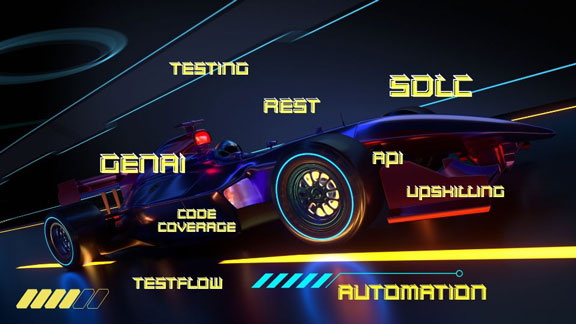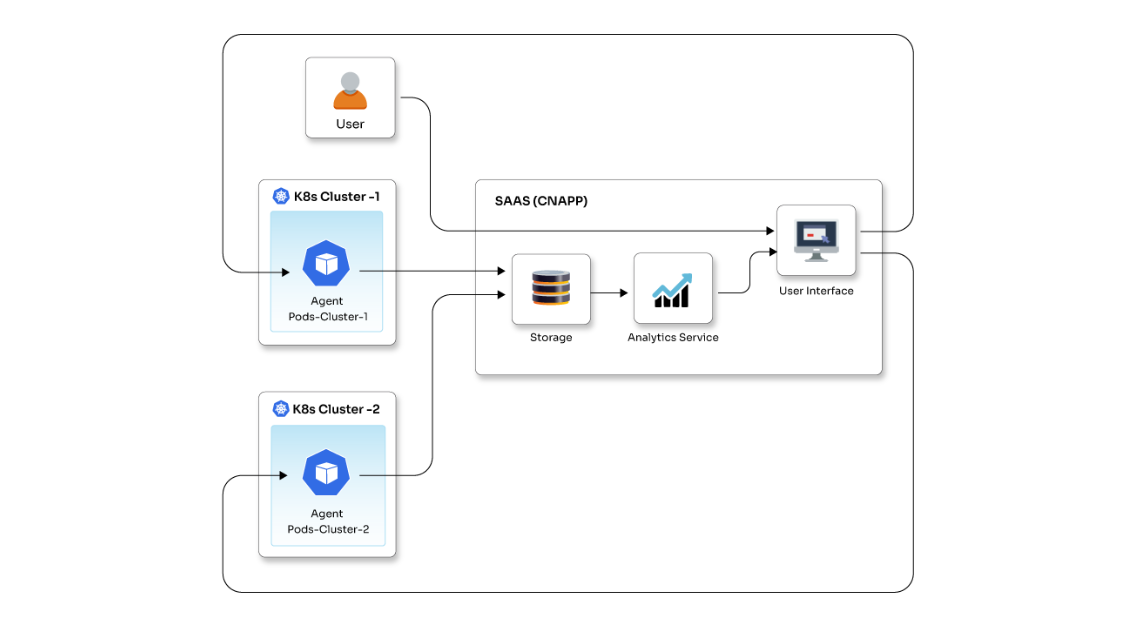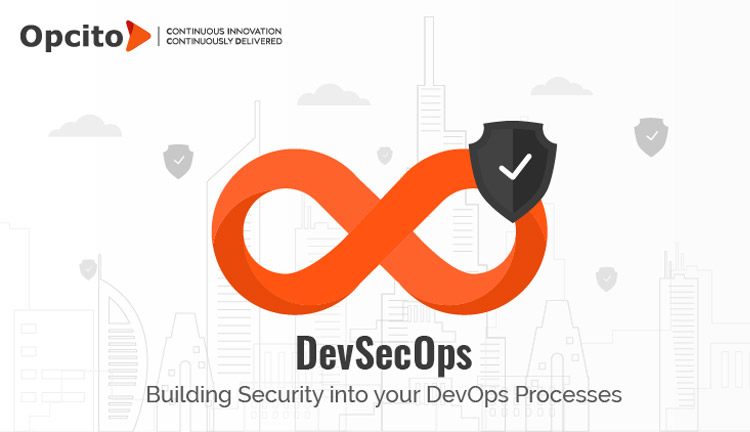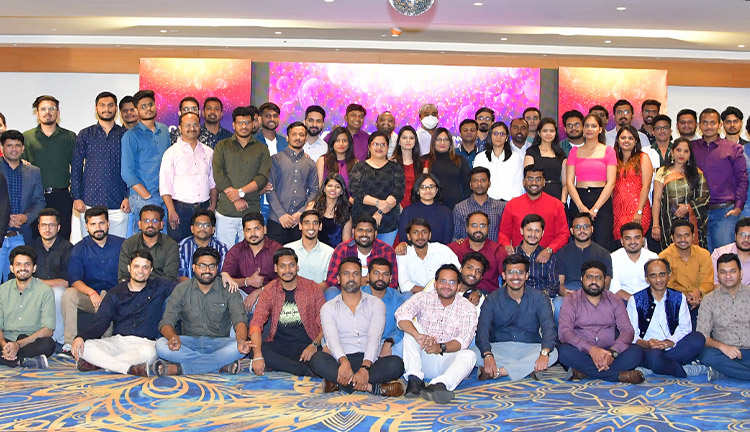Zero Trust security in the age of DevSecOps

Posted By
Vinay Patil

The digital landscape is evolving at breakneck speed. Today's organizations embrace hybrid cloud environments, empower remote teams, and constantly grapple with evolving cyber threats. This dynamic landscape demands a security model built for agility and constant verification – enter Zero Trust.
What is Zero Trust?
Zero Trust, a modern security framework, redefines how we think about network trust. In today's fast-paced digital world, where organizations work in hybrid cloud environments, have remote teams, and face frequent cyber threats, the need for a security model that adapts to safeguard data, apps, and people, regardless of their location, is crystal clear.
The assumption that a robust firewall is enough to protect everything does not suit modern businesses. Zero Trust changes the game by assuming that breaches can happen at any time. It means that every access request goes through strict checks, no matter where it comes from or where it's going. Techniques like micro-segmentation and the principle of least privilege limit the chances of any unauthorized lateral movement, and the use of intelligent tools and real-time analysis spot and flag anything unusual. According to a MarketsandMarkets research, the Zero Trust Security Market is projected to grow from USD 31 billion in 2023 to USD 68 billion by 2028 at a Compound Annual Growth Rate (CAGR) of 16.9%.
As we dive into the world of Zero Trust, this blog explores its core principles and how they perfectly match with DevSecOps methodologies, bringing in a new era of robust security and innovation.
Zero Trust in action – how it works
Zero Trust is a security framework combining advanced technologies like risk-based multi-factor authentication, identity protection, endpoint security, and cloud workload technology to rigorously verify user and system identities, evaluate access, and maintain ongoing security. It entails encrypting data, securing email, and verifying asset and endpoint hygiene before granting access.
In contrast to the traditional "trust but verify" network security model, where users and endpoints within the organization's perimeter are automatically trusted, Zero Trust takes a different path. The traditional approach left organizations vulnerable to threats from malicious internal actors and compromised credentials. Zero Trust architecture mandates continuous monitoring and validation of user identities, devices, privileges, and attributes while enforcing policies that consider risks and compliance requirements. It's a dynamic approach that recognizes the evolving nature of threats and user attributes.
Core principles of the Zero Trust model
- Continuous verification: Zero Trust's foundation lies in the concept of continuous verification. It mandates that Trust should never be assumed for any user or device. In a Zero Trust network, user identities and device security are persistently confirmed. Access rights are evaluated based on multiple data points, including user identity, device health, resources, data classification, and real-time anomalies. Access is continually reassessed and adjusted according to these parameters. This approach eradicates the notion of inherently trusted zones, credentials, or devices. Instead, the guiding philosophy is "Never Trust, Always Verify." Risk-based conditional access is crucial to balance security and user experience to implement continuous verification effectively. Rapid, scalable, and adaptive dynamic policy models are essential to accommodate the ever-evolving network landscape, ensuring compliance with organizational requirements and mitigating risks effectively.
- Least privilege access: The principle of least privilege (PoLP) is at the core of Zero Trust. It revolves around granting users and devices the minimum access rights necessary for their specific tasks. This restriction reduces the potential attack surface, as individuals only have access to the specific capabilities required for their roles. This principle is extended to non-human accounts, such as service accounts, ensuring they only possess the minimum required permissions. Zero Trust minimizes the risk of overprivileged accounts and unauthorized access by adhering to the principle of least privilege.
- Micro-segmentation and access control: Micro-segmentation is an essential Zero Trust practice that involves dividing the network into isolated segments or zones. Each segment operates independently and has strict access control policies. This architecture enhances security by minimizing lateral movement within the network. Unlike traditional network-based segmentation, which can be challenging to maintain as the network evolves, micro-segmentation provides granular control over data flow. Access between segments is only granted based on strict access control policies adapting to changing network conditions.
- Authentication and authorization: Zero Trust mandates rigorous authentication and authorization for every device, user, and network flow. At no point is access implicitly trusted. Each session requires robust authentication mechanisms to validate the identity and privileges of the user or device. Authorization is based on a strict "need-to-know" basis, ensuring that access rights align with the current context and that Trust is never assumed.
- Multi-Factor Authentication (MFA): Multi-factor authentication (MFA) is a fundamental security practice within Zero Trust. MFA enforces additional layers of identity verification beyond passwords. Users must provide multiple forms of evidence to establish their identity. For example, when logging into platforms like Google or Facebook, Multi-Factor Authentication (MFA) requires you to enter your password and confirm your identity by receiving a one-time code via another device (generally a mobile phone). You enter the code, and only if it's correct will you gain access. This additional layer of security significantly enhances identity validation and safeguards against unauthorized access, as attackers face additional hurdles when attempting to breach the system.
- Dynamic security policies: Zero Trust relies on dynamic security policies that adapt to evolving circumstances. These policies react to shifts in user behavior, changes in device security posture, and emerging threats. A dynamic approach ensures that security controls remain responsive and effective in the face of a constantly changing threat landscape.
- Limit the "Blast Radius": In the event of a security breach, Zero Trust emphasizes limiting the scope of potential damage. This is achieved through identity-based segmentation and the principle of least privilege. By isolating compromised areas and restricting an attacker's access, a breach's "blast radius" is reduced. In practical terms, this means that even if a breach occurs, the impact is confined, allowing security teams more time to detect, respond, and mitigate the attack.
- Device access control: Zero Trust extends strict control measures to devices seeking access to the network. Each device is monitored, authorized, and evaluated to ensure it has not been compromised. This additional layer of control further reduces the attack surface, as only trusted and uncompromised devices are permitted to access the network.
- Prevent lateral movement: Zero Trust is designed to prevent the lateral movement of attackers within the network. Lateral movement occurs when an attacker, having gained initial access, attempts to navigate and compromise other network parts. In a Zero Trust model, access is segmented and must be regularly re-established, making it significantly harder for an attacker to move laterally. Detection of an attacker's presence leads to the prompt quarantine of the compromised device or user account, preventing further access and spread within the network.
- Secure all communication: Ensuring secure communication means that every interaction within the network is treated with caution. Regardless of whether the user or device is known and trusted, each session is subject to explicit permission, even if they've accessed the network before. Imagine it as though there's a security checkpoint at the entrance to every communication or interaction. Even if someone has been inside the network before, they must go through security checks whenever they want to access a specific application or service. This granular approach ensures that unauthorized access is prevented, enhancing the network's overall security. In simpler terms, with Zero Trust, no one is allowed to move freely within the network without proper verification and permission for each interaction, making it much more secure against internal and external threats.
Continuous monitoring and robust alerting are fundamental aspects of Zero Trust. While Zero Trust provides a highly secure environment, it acknowledges that no system is entirely immune to threats. Therefore, it is imperative to capture and assess any malicious activities. Security teams conduct root cause analysis to identify and rectify vulnerabilities within the existing security posture, ensuring the system remains resilient and adaptive to evolving threats.
What are the Zero Trust best practices?
These best practices will optimize your Zero Trust initiatives:
- Continuous monitoring: Vigilantly observe network traffic and connected devices to ensure all users and systems are continuously verified and authenticated.
- Timely updates: Keep all devices updated to patch vulnerabilities swiftly. Zero Trust networks should restrict access to devices with known vulnerabilities to maintain security.
- Principle of least privilege: Apply the principle of least privilege to every member of your organization, ensuring they have only the minimum access required. This minimizes potential damage if an end-user account is compromised.
- Network partitioning: Divide your network into smaller segments to contain breaches quickly. Microsegmentation is an effective technique for achieving this.
- Hardware-based MFA: Use hardware-based security keys for multi-factor authentication, which are more secure than soft tokens like one-time passcodes (OTPs).
- Leverage threat intelligence: Stay ahead of evolving threats by subscribing to the latest threat intelligence data feeds.
- User-centric security: Avoid overly strict security measures that could incentivize end-users to circumvent them. Strike a balance that aligns with user needs while maintaining security.
How does Zero Trust Network Access improve CI/CD pipelines in DevSecOps
This is how Zero Trust Network Access (ZTNA) improves automated CI/CD pipelines:
- It is entirely software-driven: Zero Trust security is driven 100% by software, not dependent on specific hardware. It can secure various environments, including cloud platforms and on-premises hardware. It embraces cloud-based concepts like APIs and Kubernetes operators to deploy security configurations as code, making it adaptable. Zero Trust extends the idea of infrastructure as code to the security layer, allowing for programmable and technology-agnostic network security.
- Heightens business-level network security: Business-driven network security in ZTNA means aligning policies with business needs, not network structures. ZTNA technology automates policy translation to eliminate manual control processes. For example, containers labelled as production assets can only communicate with matching production services.
- Applies secure access to the session not the entire network: Applying security to individual network sessions rather than the entire network streamlines automation and avoids cumbersome changes to firewall rules. It involves creating secure tunnels between services to protect each connection separately, enabling easy testing and scaling without significant latency. This direct tunnel approach also efficiently accommodates cloud environments with overlapping IP address spaces.
- Provides identity and context based real-time security: ZTNA uses strong identity controls, including service certificates, to determine service identity and access privileges based on various attributes like tags, location, and role. It allows services to communicate with their counterparts independently of the underlying technology they use.
- Thorough audit trails: ZTNA audits every service connection in line with their respective policies and service attributes. This method facilitates the generation of distinct audit logs for development and production environments.
What next for Zero Trust?
Zero Trust is an evolving model with these key trends expected to drive its advancement:
- Unified policy enforcement: Zero Trust's focus is shifting towards holistic protection by unifying policies. This convergence allows for consistent enforcement, simplifying security controls.
- Enhanced threat intelligence: As attacks become more sophisticated, integrated extended detection and response (XDR) will provide comprehensive visibility and automated responses, strengthening incident prioritization.
- Zero Trust in DevSecOps: Zero Trust principles will influence software and DevSecOps processes. Access to code and development tools will employ the principle of least privilege, ensuring minimal exposure of secure resources.
- Efficient security posture management: Security tools will become more intelligent, enabling efficient policy management. Posture management will assess risks, improve configuration changes, and enhance end-user productivity.
Zero Trust is your digital shield, continuously verifying and securing every user and system. It's a proactive approach that continually verifies trust and aligns perfectly with the DevSecOps culture. Think of it as assuming nothing is safe until proven otherwise.
Ready to implement Zero Trust and bolster your organization's security? Contact us at contact@opcito.com to start your journey toward a safer, more secure digital environment.




















